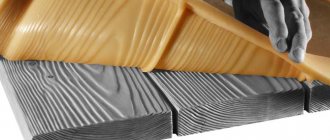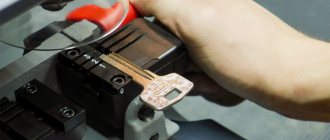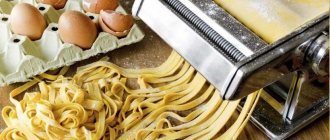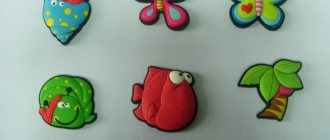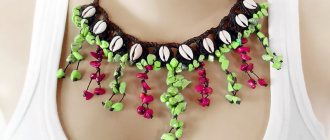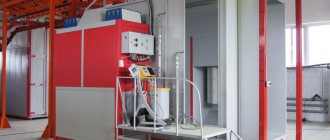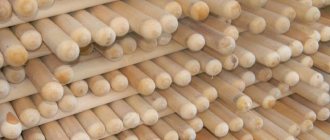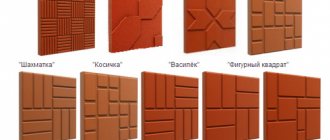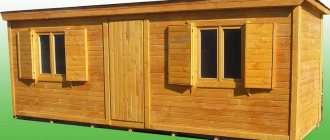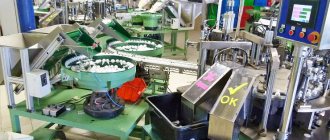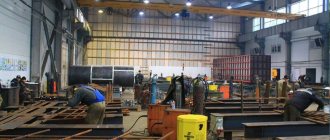How do you like the idea of starting a business making leather goods with only 10,000 rubles in your pocket? No connections. Without experience. And so that it could also be combined with work?
If you are interested, make yourself comfortable. I will tell you everything you need to know to start your own mini-production of leather accessories. Everything I write about is solely my experience. In 2016, I started working with leather myself. I studied everything I could find on the Internet at that time, re-read hundreds of articles and watched half of YouTube. And then he consolidated this knowledge through practical experience.
The purpose of this article is to give you everything you need to get started. So that you don't have to re-read a bunch of other articles, like I had to do.
Introduction
Making products from genuine leather is a great idea. Leather has been used by people since ancient times and will always be in demand. It is plastic, pliable, durable. If you take care of something made from genuine leather, it can be passed on from generation to generation!
The income of the population is growing, and with it the demand for quality goods is growing. Especially handmade ones. Such products have always been valued for their uniqueness. There is no shame in giving them. It's nice to receive them as a gift. Using them is a pleasure. And their cost is approximately equal to high-quality factory products from well-known brands.
This business is perfect for creative people and people who like to do things with their hands. It can be done either alone or with the whole family, distributing different functions to everyone.
How to find “your” client
Surely many of you have heard the expression that for half of a person’s life he works for his own name, and for the second half his name works for him. I am sure that this applies to absolutely all hand-made ideas. The quality of the products will definitely make your brand recognizable. But first you need to find your clients. Take part in a wide variety of exhibitions, presentations, and shows in which you can show off your products. I have already mentioned a small shop in production, as well as the development of online sales.
It is possible that several works will have to be given as gifts, so to speak “advertising donations” to such people who can give your business wide publicity. Remember - there is a buyer for any product. The main thing is to win his trust. And I believe you will definitely succeed! Good luck in business!
A short video about the creation of a new leather goods brand
Leather goods as a business, where to start?
Any business starts with an idea. In our case, we need to decide on the direction. From leather you can make:
- Clothes;
- Shoes;
- Belts;
- Accessories – wallets, cases, bags, briefcases;
- Jewelry – bracelets, necklaces, earrings, etc.
You need to choose what interests you. But in our case, the first directions are eliminated, since their production requires significantly more capital. But you can start making wallets, for example, bags and jewelry as soon as you buy tools and leather.
Sew something simple to start with. For example, a passport cover. This will give you confidence and motivate you. You will get the first experience, and it will be easier to move on.
Leather production technology + Video
The main stages of work at a tannery can be described as follows:
- Preparation;
- tanning;
- finishing.
The skins are supplied to production in dry form, since the raw materials were previously soaked in salt (preserved). This is a process necessary to ensure that the hide does not deteriorate in transit.
At the factory, the first thing they do is soaking - that is, the soaking process. To do this, hard salted skins are placed in soaking-ash drums. The salt that filled all the pores is gradually washed out of them.
The wet skins are then sent onto a conveyor belt. It is worth saying that workers on the first conveyor belt perform complex and unpleasant, but very important work on primary preparation - removing hair, removing remnants of subcutaneous fat from the inner layer. The skins slip, they are difficult to hold, and you need to quickly process them with a sharp knife. There is an unpleasant, suffocating smell in the workshop.
The next stage: the raw materials are loaded with special devices and moved to the tanning shop. This stage, which already relates to processing, is also important - a special chemical composition removes microorganisms from the skin. The result is a standard technological material in which all processes characteristic of living organisms are stopped. This material will subsequently be used to produce leather of different shades and qualities.
In the meantime, all the material looks the same. Since the leather was treated with chrome, it takes on a bluish tint and is called wet-blue. By the way, earlier, when processing was carried out using organic compounds, the skin turned out white or yellowish.
In large workshops, the processed leather is dried and then placed on the table of workers armed with a special planing unit. Additional processing takes place there: the leather is exfoliated by a planing apparatus and sorted by quality.
The top layer is the most expensive. The middle one is used for standard things. And thin trimmings are suitable for the production of technical gelatin or inexpensive pressed leather.
The tanning industry works to order, so there is always a plan for producing leather of a certain color. The coloring process takes place as if in the old fashioned way - in huge oak barrels. The dyeing and greasing drums rotate, and so do the skins. They splash in the coloring liquid. By the way, during painting, the leather acquires not only color but also other consumer properties - elasticity, firmness, softness and wear resistance.
Now the leather looks almost ready for use and does not resemble the raw materials from the first assembly line. Now it has a professional name - crust. It is pressed in drums similar to Soviet household units, and then sent to dry.
Crusts are hung like laundry on special brackets, and they roll right in the workshop under the ceiling. This drying method is called atmospheric.
Crusts are multi-colored, look very picturesque, and among them there are fashionable bright shades. They make the workshop look more joyful. But some types of crusts should be dried using the frame method, that is, by stretching them onto a rectangular frame. This is usually done with leather intended for upholstery.
See more photos in the Live Journal of photographer Andrey Senyushkin.
In the second finishing shop, there are even more crust options. Using special devices, they add shine to the skin and spray it with a water-repellent composition or pearlescent chips. If you need to get a textured pattern, the skin is placed on a hot stone rough surface, pressed against it and held for some time. Now the production process can be considered complete.
After final quality control, the products are formed into batches for delivery to the customer. It is stored in the form of rolls, since it is impossible to fold capricious material.
In some cases, the customer does not require material that has gone through the full production cycle, and simply tanned leather is sufficient. After all, the process of preparing hides is complex and requires special chemical compounds, while other processes are much simpler. The cost of incompletely processed skins is naturally lower than that of fully finished ones.
Video of the whole process:
Where to study to be a furrier?
This is the name of an artisan who works with leather. I learned from videos on YouTube. You will find hundreds of useful videos in Russian there. The authors show every detail of the production process, generously sharing their experience.
When I wanted to learn how to sew with two needles, that’s what I wrote. Here's a good video on this topic.
(Duration less than 2 minutes)
This seam is called “saddle”, from the word saddle. It is very reliable, I sewed with it.
Another great place, a treasure trove of information, is the arnesi.ru forum. You will find an answer to any question here, and if not, ask your own, they will definitely answer you.
Some cities host master classes where, for a low cost, you can get your first experience and communicate with like-minded people.
How much space is needed for a business?
To organize the entire production cycle of natural leather belts, 10-15 squares will be enough. As a result, one room in the house is quite suitable, the only thing worth remembering is the painting process, it must be done outside the living quarters. An ordinary garage is quite suitable for painting.
Of course, someone will say that this is “handicraft”, and that is exactly what it is, but remember that today it is “handicraft” that is popular. That is, a product produced by hand using the simplest technologies.
So, by all general characteristics, a business can be classified exclusively as a home idea or a business idea in a garage, and a small one at that.
*
What tools are needed for working with leather and where is it profitable to buy them?
To get started, you don't need many tools.
Here is the required list:
- Cutting knife;
- Punchers;
- The hammer is not metal;
- Awl;
- Needles;
- Seam marker;
- Clamp;
- Metal ruler;
- Special rod for leather;
- Glue (I have nairite), threads, and other consumables.
Here's what else you can buy if you decide to make this your profession:
- Leather scissors;
- Engraver/mini-drill – for grinding ends;
- End grinding attachments;
- Round punches (for buttons);
- Tool for flaring buttons;
- Multifunction device;
- Marker or machine for coloring ends;
- Tool for cutting grooves for seams.
As you can see, some of these materials can be purchased at a regular hardware store. Threads, glue, awls, scissors and some other tools are available in shoemakers' stores. Other tools can be ordered from aliexpress. You may have to wait a little, but you will save 50–70% of your budget. In 2020, I bought punches for 250 rubles on Ali, but in our Russian online store the exact same ones cost more than a thousand. It's the same with other tools.
As for seam punches. There are different ones - round, lowercase, diamond-shaped. I bought diamond-shaped ones because the seam then looks very nice.
In the photo below you will see all the tools that I wrote about above.
What does the technological process look like?
According to the manufacturing technology, leather belts are divided into two types:
The first option is to make a multi-layer belt.
The multilayer product is a classic option and consists of three components.
- - front part. A variety of leathers are used to make it; in fact, multi-layer belts are made from ostrich, snake, goat and other extravagant leathers. The choice of source material for the front part is a purely individual matter and depends on what kind of belt will be produced and how much it will cost.
- - lining. As a gasket, they can use some types of low-grade leather raw materials or MPSC (cellulose leather gasket material), the so-called leather cardboard. It is worth noting that when making a multi-layer leather belt, you can do without a lining, but the wear resistance and quality of the final product is reduced.
- - bottom layer. For this layer of the belt, pigskin is most often used. Pigskin has a number of benefits for use as a base layer. Firstly, pigskin is more wear-resistant, and secondly, it is cheaper.
The manufacturing technology of a multilayer belt itself is as follows:
- The first stage of production is cutting the blanks to the required sizes;
- The second stage is to glue three layers, with the bottom layer being folded inward. When gluing, presses are used.
- The third stage is to stitch the product around the perimeter.
- The fourth stage is embossing or engraving, punching the necessary holes.
- The fifth stage is painting and sanding.
- The sixth stage is final assembly. Installing a buckle, additional rings, and so on.
It is worth noting that the process of combined production is described; with this method, the leather belt is glued and stitched. According to the technology itself, it is possible to use only one of the processes, either gluing or stitching, but both options are not suitable for a small home business, since they do not guarantee quality.
The production technology of a single-layer belt is simpler:
- - cut out the product;
- - punch the necessary holes
- — we do engraving or embossing;
- - sand the edges;
- - paint;
- — install buckles and rivets.
Compared to multi-layer belts, single-layer belts are not considered a classic option. But they began to enjoy enormous popularity as an accessory to jeans. Although today they are worn not only by denim lovers, but also as an addition to traditional suits.
What kind of leather do you need and where is the best place to buy it?
90% of craftsmen work with already fully processed leather. It's called chrome. All you need to do in this case is buy the skin you like. You will only need to select the type of leather, its color and thickness.
But in more detail, leather can be:
- Raw – processing is minimal, the original properties of the material are preserved;
- Rawhide - goes through more of a processing stage than raw leather, but does not go through the tanning stage;
- Tanned rawhide – lightly tanned leather;
- Tanned leather is leather that is completely ready for production. There are different tanning methods, one of the most popular is chrome.
There are craftsmen who prefer rawhide. They themselves paint it in the desired colors, make patterned embossing using special stamps, in general, they create.
But first we need regular chrome leather. Start with it, and then decide what kind of leather to work with.
We became familiar with the processing method. Now let's look at the types of leather.
Types of leather by origin
Calfskin
- Slime is the skin of an unborn calf. Very soft, it is used to make leather called “laika”;
- Opoek - the skins of young calves that fed only on milk. The leather is very soft and delicate, but at the same time strong and elastic. The thickness of such leather is from 0.5 to 1.4 mm;
- Outgrowth is the skin of calves that are not yet a year old, but have already switched to plant foods. The younger the skin, the higher its value;
- Half-leather - leather from calves up to one and a half years old. Thickness is from 1 to 3 mm, the skin is quite rough;
- Yalovka is the skin of adult cows and bulls. Rough, often with defects. During production it is sawn to reduce the thickness;
- Bychina is the thickest skin. Usually produced for sewing saddles.
Sheep and goat leather
- Chevreau is the skin of kids less than six months old. Very high quality, beautiful and widespread leather. Used literally everywhere. From shoes to key rings and business card holders;
- Goat leather – goat skin, older than six months. The older the age, the lower the quality;
- Chevrette is the skin of sheep that are less than six months old. Properties are close to chevro;
- Sheepskin is the skin of sheep that are more than six months old. Mainly used for fur products.
Types of leather by processing method
- Nappa is a type of leather made from cattle. It is subjected to strong processing, is not afraid of dirt, and has a smooth surface. Used to make shoes;
- Laika is a very soft, elastic leather. Think of good leather gloves and you will understand what kind of leather we are talking about;
- Suede is a very soft leather with a velvet surface. They are made from different types of leather, allow air and water to pass through, but are still used for the production of shoes because of their external qualities;
- Nubuck is an economical version of suede. It has less pile, worse characteristics, and requires careful care. But, nevertheless, it is widely used in the production of shoes, clothing and accessories;
- Velor is similar to nubuck, but if nubuck and suede are tanned using vegetable fats, then velor is tanned using chrome. The scope of application is the same as that of nubuck;
- Split leather is leather that has been sawed into several layers during the production process. Most often used for the production of different layers of shoes and the production of velor. Some manufacturers apply polymer, giving one side a smooth surface;
- Crazy Horse – cattle leather with an aged effect. Very high quality, durable and beautiful. Such leather can change color in places where it is broken and stretched, and can also be scratched. All this gives it a beautiful, vintage look, which can be easily removed with a soft cloth if desired.
Where to buy leather
It is most profitable to buy it from manufacturers. But to begin with, this will not suit us, since they sell in bulk, and we only need 1 - 2 skins. Therefore, there are 2 options left:
- Buy it in the store. Not every city has one, but if there is one, I advise you to buy your first skin there. You can touch it, look at it, evaluate it and decide whether it suits you or not.
- Order online. You won’t have any problems with this, there are many sellers on the Internet, and on VKontakte alone there are a lot of groups where you can buy it. This is not the best option, since the skin cannot be touched and its quality cannot be assessed. I ordered several skins that did not suit me at all. Therefore, I once again advise you to buy it in a store, even if it is a little more expensive there.
The cost of leather is determined by square decimeters, but only skins are sold, with all their irregularities. On average, the cost of one decimeter of high-quality leather is 25-30 rubles.
The better and more exclusive the leather, the higher its cost.
The area of the smallest skin is from 45-50 decimeters. That is, it will cost more than a thousand rubles. However, if you want to make jewelry, then go to the local studios. Perhaps there will be scraps that will be given to you several times cheaper. The cost of trimmings is measured in kilograms.
Product sales channels!
As already mentioned, for home production without registration, the best channel is the Internet. Receiving orders will only be possible from individuals.
Official registration gives you more opportunities: 1. You can enter into supply agreements with stores and boutiques; 2. Sell in bulk; 3. You can freely accept orders from legal entities. and physical persons; 4. In case of large production, open your own sales point; 5. Issue a quality certificate for your products. This will immediately raise your authority in the eyes of buyers.
Put it into practice!
Leather goods are integral parts of clothing. In addition to the utilitarian function, they also play an aesthetic role, being an addition to the costume. Leather products are popular among buyers, which means that a profitable business can be made from their sale or production.
Natalya GULATKAN
The greatest demand among buyers is for belts, wallets, binders for diaries, and cases for mobile phones. You can start their production in your own apartment, doing all the work yourself. However, first you should undergo training from a master, since this craft requires deep knowledge.
Leather craftsman Petr Kuku said that from an early age he helped his father in the workshop for making outerwear from leather and fur. “For some time,” he says, “he worked in workshops making bags and shoes, gradually honing and polishing his skills. At the same time, I studied at the Technical University, then opened my own business.”
Alexander Khentov, Deputy Director of Maalex Group, says that before the company decided to start its own production of leather bags and clutches, the business was built on selling bags from abroad. “To learn how to sew leather goods, I worked for some time with a master, then received secondary specialized education in this profession, because without knowledge in this area it is almost impossible to work,” he said.
Before opening your own workshop, acquire an entrepreneurial patent - a state certificate that certifies the right to engage in the type of entrepreneurial activity specified in it for a certain period (Article 1, paragraph 1 of the Law on Entrepreneurial Patent No. 93-XIV of July 15, 1998) . This document is issued by the mayor's office and the territorial tax office.
Material quality
Quality is the main thing that a master should pay attention to. The number of satisfied customers, and therefore your image, depends on the quality of the products. Determine what material your products will be made of - natural or artificial leather. Although genuine leather will be more expensive, its quality is better.
To ensure that your production does not stand idle, acquire permanent suppliers. When choosing them, pay attention to the company’s image, the quality of raw materials, and how it meets delivery deadlines. Suppliers sell leather not in sheets, but in skins. One square decimeter of leather (goat, calf or pork) costs about 1,000 lei. More exotic species are more expensive.
However, genuine leather also varies in quality. For example, cheap belts are made from pigskin, but the durability of such raw materials is poor. The most popular material is calfskin. Sheepskin is also used, and goatskin is used for expensive designer belts. As for bags, it is better to make them from hard leather. If you are using soft leather, you need to use duplicating linings made of dense material to give the shape.
Equipment installation
Many craftsmen started their business with single orders, which they completed at home. However, if you want to expand into production capacity, you will need space for a full-fledged workshop. All equipment necessary for the technological process will be located there. In the room you will place a convenient table for cutting, racks for workpieces, materials and accessories. If you want to reach the required volumes of products for sale, the production of leather products will have to be automated. Without equipment, you will not be able to perform technological processes efficiently and without defects.
Initial capital
The amount of investment in this business depends on the number of personnel, the material used, as well as on the equipment. So, Eduard Donchila, director of the Trenwood company, says that you can buy a sewing machine for 1 thousand €, or you can buy it for 5-6 thousand € (German). Naturally, the more money you invest in production, the better.
According to Alexander Hentov, the minimum amount required to enter this business is $10,000 (about 150,000 lei). It includes the costs of renting premises, purchasing equipment, materials, staff salaries, and paying for utilities.
We select personnel
Considering that it will be difficult for one person to manage the business, it is better to hire a second master, who, naturally, must have the necessary skills. If you decide to sell products through your own retail outlet, like Alexander Khentov, you will have to additionally hire a sales consultant, on whose efforts your profit will depend. “The more professional the seller, the more buyers he will be able to interest in your product, therefore, the faster you will recoup your investment in the business and begin to make a profit,” he says.
Difficulties
According to Peter Kuku, there are many difficulties in this business. “You must be able to correctly convey information to the client, and, accordingly, understand him correctly. You also have the responsibility for finding quality materials and for properly organizing the work of the workshop. And finally, as one experienced craftsman once told me: you need to collect the best from different technologies and methods of making objects and apply it in practice,” shared Petr Kuku.
Eduard Donchila draws attention to the lack of specialists in this field: “There are almost no real professionals. And we need thinking people who love to work with their hands and are ready to perform different operations every day. In addition, specialists must comply with the requirements for product quality, which is again very difficult for them. Another question is whether potential employees want to be trained. Unfortunately, I don’t see any particular enthusiasm on their part.”
Other difficulties that arise in this business include the high price of the material. Eduard Donchila reported that component materials, as well as leather, which he orders from Europe, become more expensive every year, sometimes several times. In addition, there are problems with equipment, because no one imports it to Moldova, so we have to order it from Italy.
“The products we sell and manufacture compete with products from China. In addition, we have a small market - the city of Chisinau. At the same time, we cannot say that we strongly feel the competition,” noted Alexander Khentov. At the same time, he noted that many companies that have worked in this market for about 10 years are closing due to unprofitability of the business.
Promotion
“It is necessary to constantly develop, participate in exhibitions that are held in Moldova, as well as abroad. Also, in terms of promotion, “word of mouth” works effectively when people recommend you to their acquaintances or friends,” added Alexander Khentov.
“If you choose between television advertising and online promotion, the latter is much more effective for leather products. However, do not forget that advertising is a long process, and before you develop a permanent client base, it will take about 5 years or even more,” warned Eduard Donchila.
Running a business is now not only fashionable, but also more profitable. More than once in my memory it has happened that civil servants or employees were simply abandoned. For example, inflation has increased in the country and shoes cost not 5,000 rubles, but 7,500, while you still receive 40,000 rubles. I know people who worked for 20 years in government jobs and when they retire they get their pennies, and besides, such people cannot come up with anything new, because they need someone else to tell them what to do.
Starting a business, namely a leather goods business, is not difficult, low-cost and promising. By making money on leather products, such a business can be easily expanded by adding, for example, tools for creating such products, or adding a new material - cotton.
Let me tell you how I started my home business in leather goods. Therefore, everything I write here is based on personal experience.
First, you need to have leather goods. Here you need to look for a good offer. At the very beginning, we bought 30 different leather goods from the largest online store, Ebay. We chose based on price and appearance. So we got wallets, belts, business card holders and cases for about $5. The only disadvantage of shopping on eBay is the long delivery time (20-40 days), since manufacturers are now mainly in China. Therefore, for a one-time purchase and subsequent sale of a product, you can purchase it on eBay, but in the future it is very difficult to predict a business with receipt of goods within 30 days.
The second way to get leather products is to go to local markets or shops, find out where they get the products from and find a supplier. Look at online stores, you can find good products that you don’t even need to buy: show photos, if they order, then buy. But this method has its disadvantages:
— Potential clients often ask for detailed photos.
— The seller from whom you will order may sell you a bad, low-quality product. And this product will have to be sold to your buyer. This will damage your reputation.
As you can see, all products are in stock in the FromLeather store. We take photographs and video reviews of our products ourselves. The main thing is that our client’s expectations are met.
At worst, you can try to make a leather product yourself. This is the most difficult path; you have to delve into sewing, your rules and formulations. In addition, you need to have steady hands so that the products come out in a marketable form;) You will need to purchase accessories for leather, leather and tools (an industrial sewing machine for leather costs from 35,000 rubles).
Secondly, you need to bring your product to the buyer, that is, do advertising. I recommend selling online because you can get a constant flow of new buyers. It is also possible to sell live, but a limited circle of people makes this method ineffective.
We are creating a group on a social network. We will find out information on how to create a group and advertise it. We add your product and interesting material to the group and repost it to your page. We add new people as friends, ask them to join the group - there is a good flow of buyers.
We are creating an online store. Here you already need to know a little about website building, so the further you go, the more difficult it becomes. We write high-quality information so that search engines see your useful site and show it to people. There are many books on how to organize sales on the Internet, so don’t be lazy and download a couple.
Thirdly, sales. You need to know the material, condition, characteristics of your leather products. Interested people will call - don't miss out on potential clients. When selling, you will see what can be changed, what is missing, what is unnecessary. Soon you will have an automated system for selling your leather products - that's the whole business.
The invisible side of business
It doesn't matter if your business is leather goods or condoms, there is something invisible that affects the success of the business. By doing business, you will develop noble qualities in yourself - patience, perseverance, confidence. At first, many people don’t succeed and they give up, but it’s not a bad business, but you didn’t have enough patience. With these three virtues in your arsenal, you can make money from any product. Therefore, grow together with your business;)
How to organize a workplace for working with leather
Organizing a good workplace is very important. Leather is not the easiest material to make. Working with it tires your arms and back, and in poor lighting also your eyes.
Fortunately, organizing a workplace is not so difficult even in an apartment; for this you need:
- Good lighting.
There should be a lot of light, I recommend using fluorescent lamps. They do not consume much energy and provide excellent illumination of the desktop;
- Ventilation.
During the work you will need to use different chemicals. At a minimum - glue. If there is no ventilation, you may have a headache;
- Shelves for tools.
If space allows, I advise storing tools not in a box, but on shelves. This way you will find the right tool much faster and reduce production time;
- Stock.
For products and skins. Some people keep it all in the closet. Well, here it is more convenient for anyone. You can't walk around in a one-room apartment. I used the mezzanine in the hallway as a storage area.
- Nice chair.
Or at least a chair with a backrest. This way your back will get less tired.
- Soundproofing the table.
It is advisable to place several pieces of linoleum or rubber under the table legs. When you make holes using punches, there will be a lot of noise, and the neighbors may be unhappy;
- Working surface of the table.
Place a cutting mat on the table. But if you can’t buy it now, you can use linoleum, plexiglass, or a plastic cutting board. You cannot work on a wooden surface, because you will quickly ruin it with a knife, and the knife itself will slide along the wood fibers in different directions when cutting.
Installing equipment
You won't be able to get by with primitive tools. You will have to automate the production of leather belts so that you can reach the required volumes of products for sale. The equipment allows technological processes to be carried out more efficiently, without a touch of handicraft.
So, you need to purchase:
- automatic or manual press;
- machine for installing rhinestones and decorations;
- machine for uniform and smooth rounding of edges;
- cutting machine.
In addition, you will need a glue-spreading machine that allows you to evenly apply the adhesive composition to the workpiece. In addition, purchase a device for embossing and cutting leather. You also need a sewing machine. It is better to take specialized models.
Of course, you will need to pay about 150 thousand or more for the equipment. But such equipment significantly saves time on manufacturing the product and, therefore, quickly pays for itself.
Don't forget about the tools. Various types of knives, scissors, punches, vices, rulers and squares - without this, the production of leather belts simply cannot exist.
When choosing tools and units, give preference to those that have proven themselves to be reliable assistants. You should not be too tight-fisted in this matter.
The same knives with replaceable blades will last you much longer. Professional equipment is significantly more expensive than household equipment, but it is more durable, as it is specially designed for industrial loads.
Manufacturers of such devices usually strive to provide customer service. Therefore, if one or another machine fails, you will not have to call specialists who can fix the problem. And it also doesn’t make sense to buy spare parts or replacement parts externally; it’s better to buy branded ones.
What can be made from leather?
There is a lot of room for creativity here. Here's what's in good demand:
- Bags, backpacks, briefcases;
- Leather folders for papers, book bindings, covers for diaries, passports and other documents;
- Wallets, clutches, purses, business card holders;
- Cases for keys, bottles, decanters;
- Belts, sheaths, holsters, cartridge belts;
- Cases for glasses;
- Bracelets, earrings, necklaces and other jewelry.
My first product was a briefcase for papers and a 14 inch laptop.
Here he is
I had no experience, just enthusiasm. I sewed it for 2 weeks. The cost price turned out to be 3,500; similar portfolios on the market cost from 10,000 rubles.
What documents are needed to open a company?
For an enterprise producing leather belts, the following documents must be prepared:
- certificate of registration of a business entity;
- papers confirming taxpayer status;
- permits from Rospotrebnadzor and the fire service;
- agreements with counterparties;
- invoices for raw materials and consumables.
If you plan to supply products to wholesalers, you must obtain a certificate for your belts.
Description of the production process
This is what the process of making leather accessories looks like:
- We draw sketches of the future product. You can do this from your head, or by looking at other products;
- We make patterns. They will allow you to reduce the time in the future when you will make the same product many times;
- Cut out blanks according to patterns;
- Mark the seam lines;
- Punch holes for the seam using a special tool;
- If necessary, install buttons, rivets or zippers, then this will not be easy to do;
- We sew the blanks with a saddle stitch (recommended);
- We process the edges of the product. We apply protective agents (for example, wax).
As you can see, it's not all that complicated. Accuracy and precision are very important here. When I was sewing my briefcase, I had to alter some parts several times because one of the walls was sewn at an angle. So, remember the rule - “Measure twice, cut once.”
Why is it profitable to produce leather belts?
One of the most popular accessories in Russia is a belt. This accessory is worn by all categories of consumers, from young to old. At the same time, the market configuration is gradually changing. If 5-6 years ago sales could be divided into two conditional categories:
- — expensive belts made of genuine leather from European manufacturers;
- - cheap products made in China.
Today the situation has changed and the middle segment of natural leather belts has begun to actively develop on the market. The quality of such products is not inferior to their European counterparts, and the price is slightly higher than the Chinese ones. The emergence of such a niche is facilitated by the growing demand from Russians for unique, high-quality handmade items. Actually, the tendency to popularize handmade products is a global trend, and here Russia has just “entered” this path. The practice of the USA and Europe shows that demand will grow by 30-40% annually, which provides the opportunity to create a home mini-business.
In general, business is based on three fundamental things:
- — demand – the issue of demand has already been considered, it will grow;
- - organization of the process - to organize a workplace, a small room of 10-15 square meters is enough and the purchase of several units, and then at will;
- - start-up capital - money is needed only for the purchase of raw materials.
The level of profitability of leather belt production varies from 300% to 1000% per product; we’ll talk about the financial part of the business plan below.
What difficulties may arise
I will list some unpleasant situations that may await you. Forewarned is forearmed, let's go:
- Come up with a design.
When I started, I had a desire to do everything unique and inimitable. Because of this, I thought for a long time about each product, the work was idle. I advise you to start by finding simple wallets, business card holders and purses on the Internet and sewing them for several months. And already during the production process you will come up with your own ideas.
- Order low-quality leather.
I have already written that it is better to buy leather in stores, if possible. You may be sent leather of poor quality by mail. It may be oak, have uneven color, damage, etc. Moreover, the photo does not always show all the flaws.
But this applies to leather from Russian manufacturers. There are fewer problems with Italian leather, but it is more expensive.
- Order quality fittings.
When you start making expensive products, you will need to install good, high-quality fittings in them. In Russia, the price for the same YKK zippers is staggering. In order to save money, order accessories directly from manufacturers through Alibaba.
- Determine the price for the finished product.
The cost of materials spent on one product is not high. Especially if it is a wallet or document cover. Therefore, a fair question arises - how much to estimate the cost of the final product. I advise you to start by making your prices 5-10% lower than your competitors, and then, when you earn a good reputation, you can raise your prices.
- Set up sales.
When you have just entered the market and no one knows about you yet, selling is quite problematic. The ideal option in this case is word of mouth. Give gifts to your family and friends, let them talk about you. Create a group on social networks, post stories there about how you work, photos in progress, photos of finished products. Register on Avito, Yula and other sites. I also recommend the website Masters Fair, where you can also sell your products.
How to advertise a business
Before launching production, think about how your product will find a buyer. Together with the designer, develop a catalog of belts and other POS materials (printed materials that promote product promotion), visit retail stores of clothing and accessories with an offer of cooperation.
Example of a business card for a leather goods workshop
In addition, develop your own resource on the Internet. It is best to develop an online store, post photos, product descriptions and promote the site in natural and advertising results.
The logical development of the business of manufacturing and selling belts would be to register a trademark and open a point of sale. In addition, expand the range with new products: purses, wallets, key holders, business card holders, covers.
Who and how to sell your products
In addition to the sales channels that I talked about in point 5, there are also wholesale sales channels. As your production ramps up, you can:
- Create your own online store;
- Rent a display case in a gift shop;
- Give the goods for sale to someone else’s store;
- Open your own shop.
When you sell products online, take care of high-quality photographs. Customers do not have the opportunity to hold the product in their hands, and therefore you can influence only one channel of perception - the visual. Therefore, arm yourself with a good camera and take high-quality pictures.
How and where to sell finished products
The profitability of a business directly depends on how developed the sales market is. You should promote your products as actively as possible. It is worth working not only on individual orders, but also for the mass consumer. The profit will be significantly higher if you can combine the two work schemes presented above.
One of the most accessible sales channels is the Internet. Its capabilities are not limited to anything.
Advertising and sales
First, you can create a small online store on a free platform or use the power of social networks. It is also worth visiting special crafts fairs. Visual images play an important role in promoting products. High-quality, beautiful photographs with the appropriate surroundings can sell anything.
Good old word of mouth also helps grow your business. Just ask your friends and acquaintances to share the news about your leather products with your surroundings. Don’t neglect creating your own website, where you will periodically post interesting articles about fashion trends in the world of leather products. You can also place useful tips on caring for accessories there.
Offline stores can also increase sales. Perhaps in the first few days it will be most profitable for you to agree on handing over the goods for sale or renting a small display case. Later, if everything is successful, you can set your sights on opening your own department or small store.
